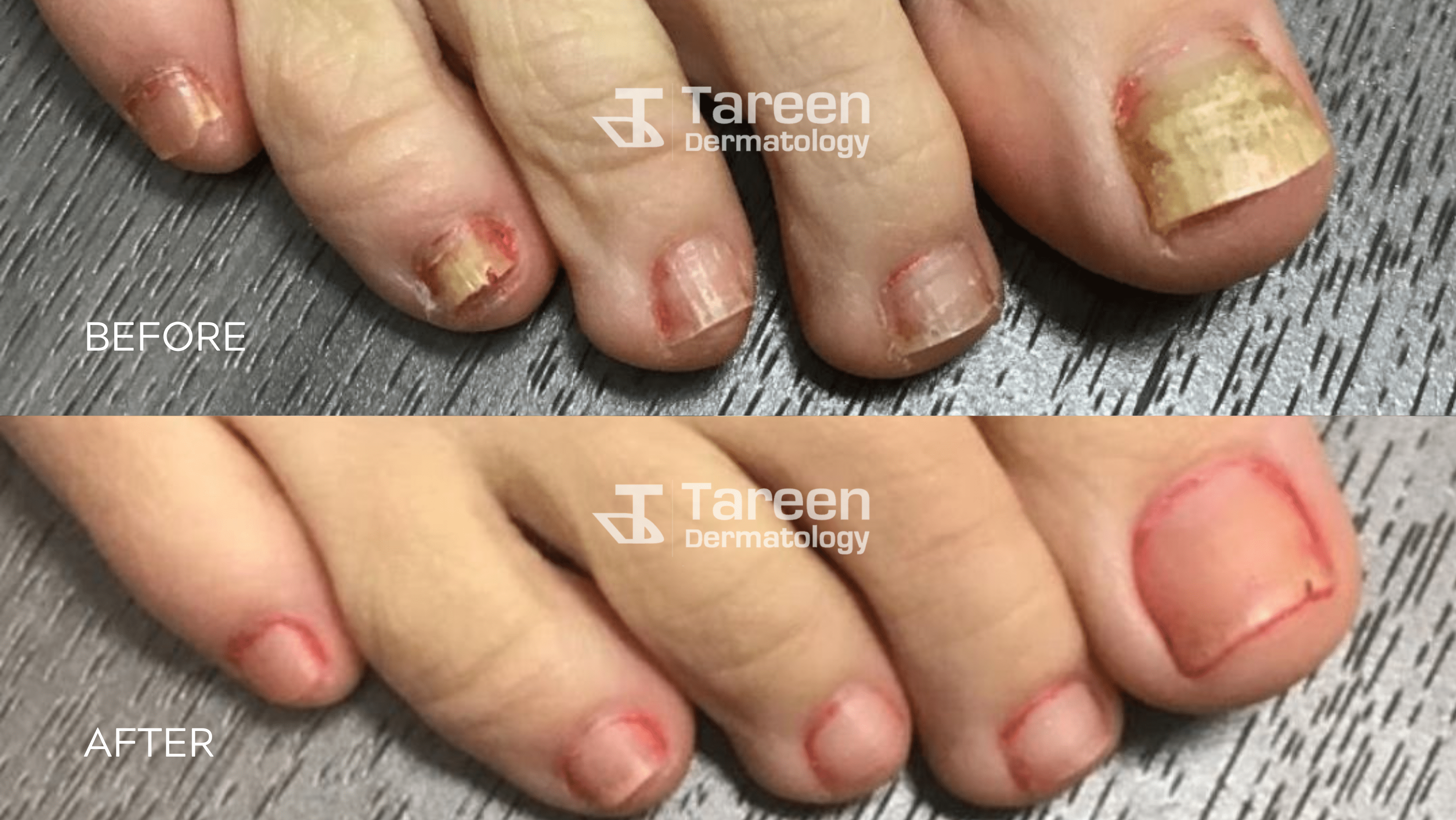There are several classifications of fungi that live on the skin, hair, and nails:
Tinea Versicolor
Normal fungus lives on our skin and protects us from other harmful bacteria and fungus. Sometimes this fungus overgrows and results in an infection called tinea versicolor. Tinea versicolor affects the chest and back of athletic adults, as the fungus feeds on sweat. It typically appears as pink, white, scaly areas on the chest and back. It may be itchy. Dr. Tareen will prescribe topical creams and washes to treat this rash. Occasionally, oral medication may be needed for deeper fungal infections.
Tinea corporis, capitis, and cruris
There are other forms of fungus that are not normally found on the human body- instead they may be picked up from a pet or by touching a warm, moist area infected with fungus (locker rooms, etc). Tinea capitis is a fungal scalp infection, most commonly found in children. Other fungal rashes can be found in the warm folds of the body- this is known as “intertrigo.”
Tinea Pedis or “Athlete’s Foot”
Foot fungus, or athlete’s foot, is scientifically referred to as tinea pedis. Signs of athlete’s foot include red, scaly patches on the bottom and sides of the foot, cracks between the toes, and sometimes small little blisters. Dr. Tareen will prescribe a prescription anti-fungal and review proper foot care.
Fungal Nail Infection
Fungal infections of the nail are referred to as onychomycosis. This condition is very common, and it is estimated that 50% of individuals over 70 have fungus in their nails, although this condition can occur at any age. Those with diabetes, poor circulation, and athletes frequently in the gym are particularly prone to fungal nails.
Several treatment options are available for nail fungus, ranging from topical creams and gels to pills taken by mouth.
Topical therapies for fungal nails: Several creams, gels, and solutions are available by prescription, and these medications are usually the first line of treatment used. Adverse effects are low, and in many scientific studies, these treatments have been shown to be effective even with nail polish on the nail. Proper application of the topical is imperative, with application to the entire nail bed and cuticle being very important.
Oral therapies for fungal nails: There are numerous pill forms of anti-fungal available for treatment, with the most commonly used medications being terbinafine or fluconazole. Oral treatment of nail fungus is reserved for fungus that does not respond to topical treatments or fungus that is very severe. There are some side effects associated with taking oral antifungal pills, and as such blood work may be required before starting this type of therapy. If you are a candidate for this treatment, your provider will review all of the risks with you at your office visit.
Lifestyle measures to prevent fungal nails: It is very common for fungus to come back in the nails, even after it has been treated completely. A few lifestyle practices may help prevent reinfection:
- Decontaminate old shoe/ socks with anti-fungal powder or wipe down with bleach spray
- Wear cotton, absorbable socks
- Clip nails short
- Avoid sharing nail clippers
- Avoid walking barefoot in public places- particularly gyms and pools
- Ensure your nail salon adequately cleans its facilities
Our Tareen Dermatology providers are experts in treating fungal nail infections. We encourage you to make an appointment today to discuss how lifestyle changes and treatment can help rid your nails of unwanted fungus!




